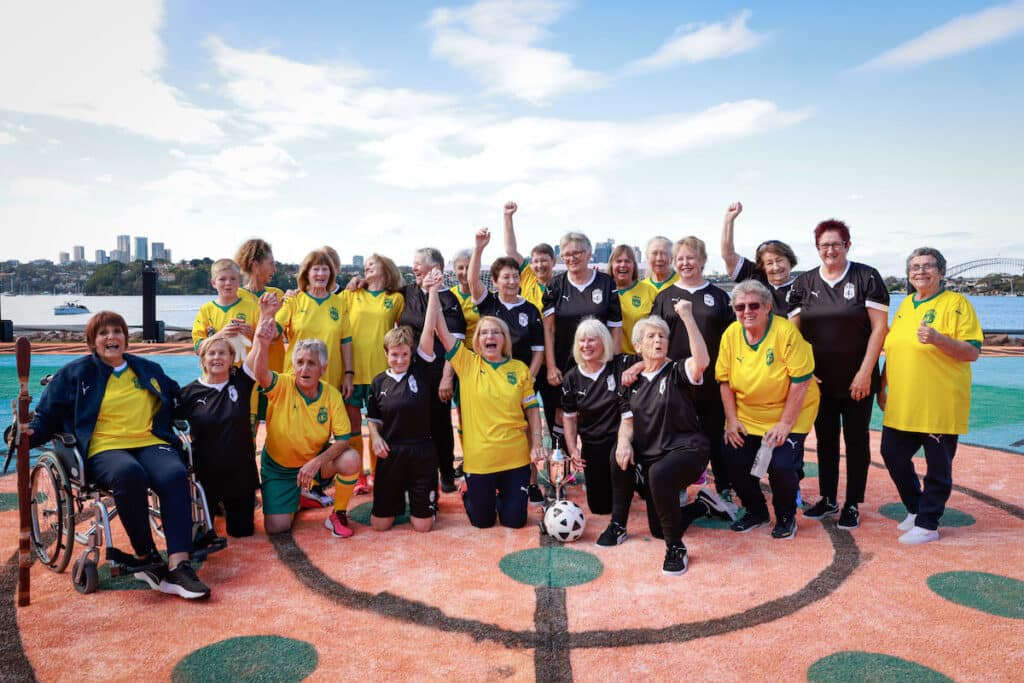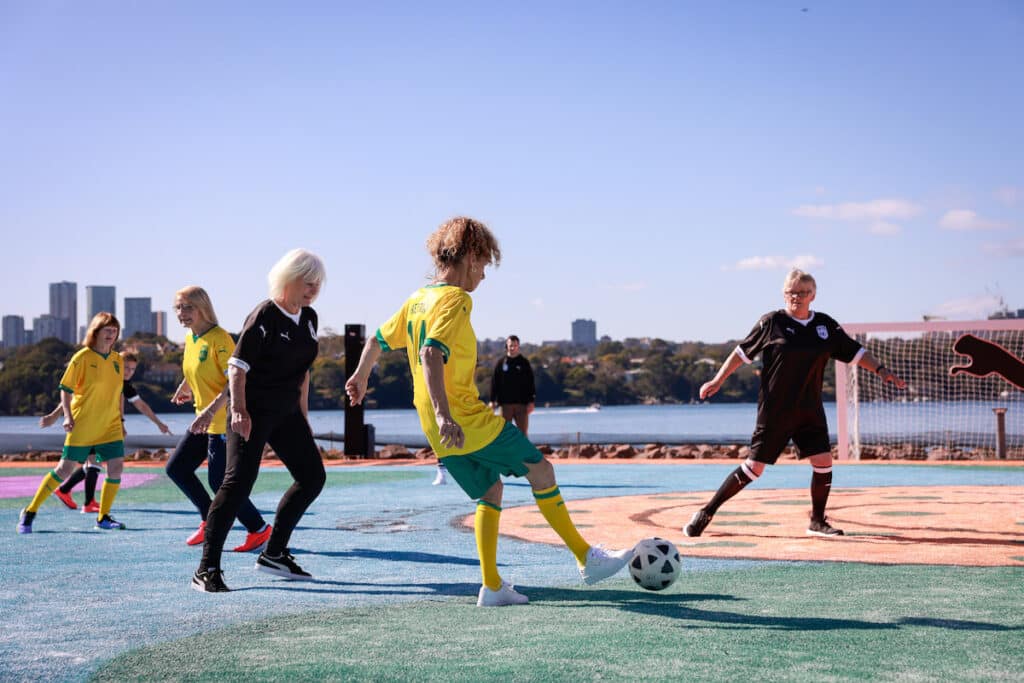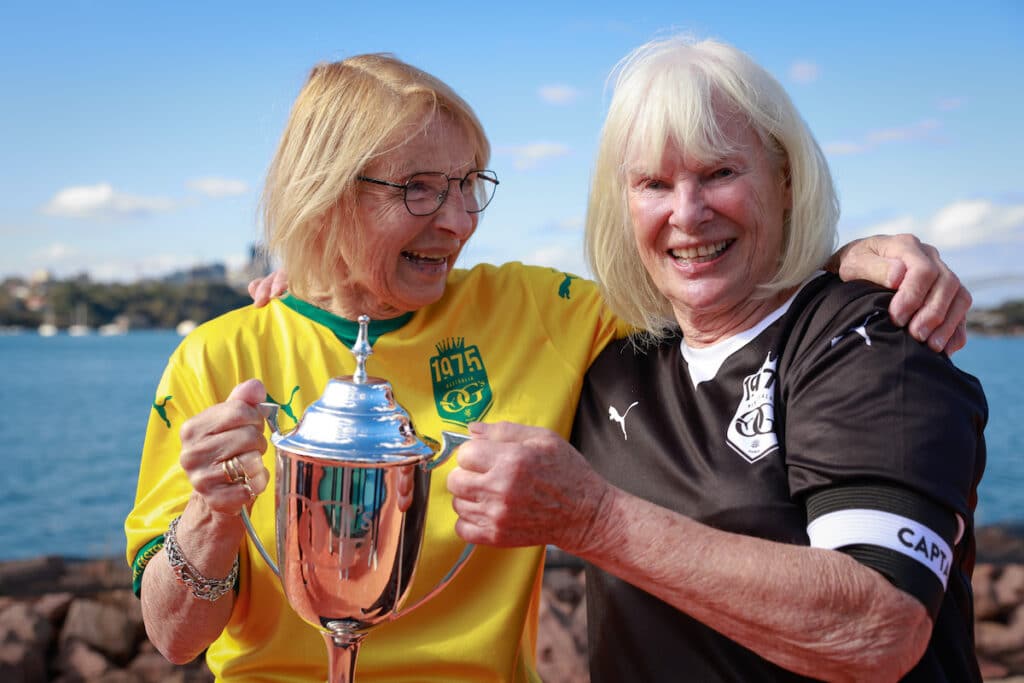They played in the historic Asian Cup in 1975, becoming the first women’s teams to represent Australia and New Zealand in football internationally. They had to fight for the opportunity to play. They fought for equality, recognition, and every dollar to get overseas. Many of these athletes lost touch, but they have reunited again thanks to a campaign by PUMA to grant them the recognition they deserve as pioneers of the game.
Pat O’Connor captained the first Australian women’s team at the 1975 Asian Cup but lost contact with the team shortly after as she moved across the country.
Almost half a century later, Pat reconnected with her teammates just in time to watch Australia defeat Ireland in the opening match of the FIFA Women’s World Cup. The team has also reunited to finally receive the recognition they deserve for their pioneering role in developing the women’s game, with PUMA officially presenting the teams at their purpose-built 2023 PUMA Pitch on Cockatoo Island in Sydney on Friday.
Meanwhile, New Zealand’s 1975 team captain Barbara Cox has also reconnected with her team in Sydney, just as New Zealand achieved its first-ever win in a FIFA Women’s World Cup match on Thursday afternoon in Auckland, defeating Norway 1-0. Cox’s team was also officially recognised in Sydney.
Both O’Connor, and Cox have also seen their 1975 Australia and New Zealand teams come together again, 48 years after that historic Asian Cup — ultimately won by New Zealand – taking up the opportunity for a rematch on Saturday, on the PUMA Pitch.

PUMA says the initiative aims to honour the athletes who’ve paved the way to support women’s football to get it to where it is today. The two teams, known as The Originals – the OGs – were officially welcomed by PUMA Oceania General Manager Pancho Gutstein, who wrote to them to thank them for their role in changing the game forever earlier this year, and personally met with them on Friday to thank them again.
PUMA has run social media campaigns on the OGs. They have installed a 10m X 10m billboard in Melbourne featuring the Australian team. They created the spectacular pitch overlooking Sydney Harbour, and on Instagram they put “The OGs on TV, where they deserve to be,” making a TV show to feature them, while filming the rematch live. And PUMA requested the advice and knowledge of these pioneers to support the next generation of women’s sport, with 23 of PUMA’s footy edition Accelerator participants watching on as the OGs were celebrated. As Pat shared with the Accellerator participants: ”Make every minute count. Work hard. Be your best. Go ahead and take it.”
These 1975 Australian and NZ teams are forever connected by the firsts they achieved for their country, becoming the first women’s team from Australia and NZ to wear the national colours. They are connected by their struggle to garner the financial support they needed to travel – they washed cars and ran cake stalls to fund the journey – and the lack of recognition they’ve received. They also share a bond when it comes to the challenges they faced to have the right to play, given gender stereotypes and societal norms that prevented so many girls and women from doing so.
Much has changed in 48 years: for the game, and the women who make up these teams. Some players went on to have families – with their grandchildren watching them play on Saturday. And a couple have sadly passed away. But watching the OGs practicing on the specially installed field, they retain the ball skills and clear passion for the game.

And seeing these OGs interact with each other, it’s clear they also retain the good humour, sense of fun, and clear friendships that, despite the four-decade break, are sustained alongside the ultimate bond that came with pioneering women’s place in the world game.
Both team captains are excellent advocates for women’s football and also for supporting women in sport. Many players have gone on to build families, friendships and careers that have continued their work driving the game forward. Australian player Trixie Tagg became a PE teacher, and proudly developed and encouraged girls’ football programs in schools. Cindy Heydon, who was just 14 when she played in 1975. Aunty Tarita Yvonne Peters was 31 when she played, and was the first Indigenous woman to represent Australia.
Barbara Cox told the crowd gathers on Friday just how much it meant to be recognised. She also highlighted the sense of emotion witnessing firsthand the 76,000-strong crowd for the opening match in Sydney on Thursday night. In Hong Kong, back in 1975, the crowd was 14,000.

